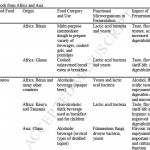Adam at Mutantfrog Travelogue, which seems to be a blog about things Japanese, has a post about a craft called Mizuhiki (水引). This involves the decorative use of twine made from a special kind of traditionally-produced paper called Washi or Wagami (和紙). Washi is made from all kinds of different agrobiodiversity:
Washi is commonly made using fibers from the bark of the gampi tree, the mitsumata shrub (Edgeworthia papyrifera), or the paper mulberry, but also can be made using bamboo, hemp, rice, and wheat.
That “gampi tree” gave me a bit of trouble, but I finally ran it to ground. It seems to be Wikstroemia sikokiana in the Thymelaeaceae. The paper looks beautiful. Anyway, in researching all this I came across a little gem:
In 1869 the then Prime Minister, William Gladstone, requested a report on Japanese paper and papermaking from the British Embassy in Japan. A thorough investigation was carried out by Sir Harry Parkes and his team of consular staff in different Japanese towns, resulting in the publication of a government report, “Reports on the manufacture of paper in Japan“, and the formation of a collection of 400+ sheets of handmade paper. The main parts of this collection are now housed in the Paper Conservation Laboratory of the Victoria and Albert Museum, and the Economic Botany Collection of the Royal Botanic Gardens, Kew. In 1879 Kew sent duplicate samples to Glasgow, Sydney, Melbourne and Adelaide, but these have been lost. The Parkes paper collection is important because the origin, price, manufacturing method and function of each paper was precisely documented.
Something to check out the next time I’m in London.
